Pristimantis ockendeni
—
Carabaya Rain Frog
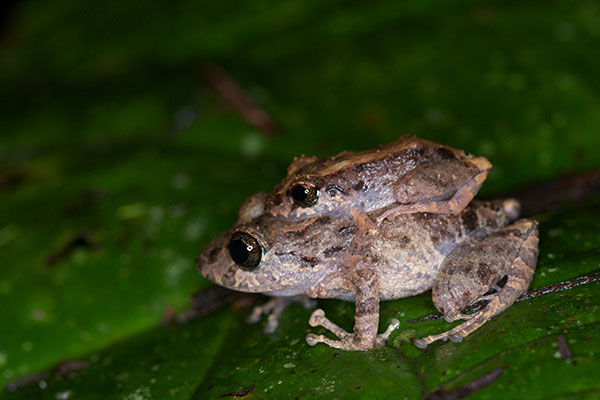
I'm not certain of the identification of this pair of amplexing Pristimantis. My first guess was P. altamazonica, but Dick Bartlett thought they looked more like P. ockendeni, and he certainly knows a lot more than I do about Amazonian herps. Without photos of its belly, thighs, snout, etc., we'll never know for sure.
Here is a complete list of the herps I saw in the wild on my 2013 MT Amazon Expeditions trip.
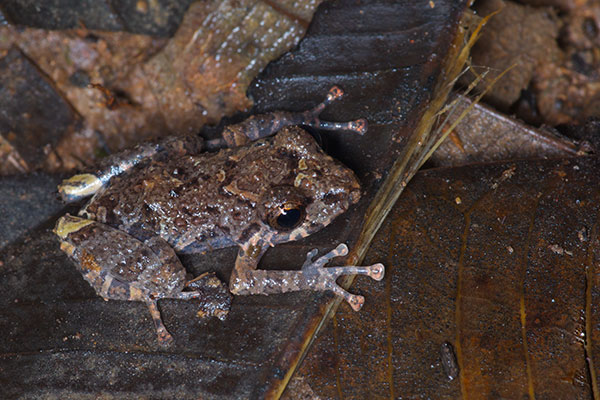
Every night we would see a handful of small, hard-to-identify Pristimantis species. I thought this one was Pristimantis diadematus, and Dick Bartlett agreed at the time. But later I learned that the known range of Pristimantis diadematus doesn't extend this far east. So my best guess now is the similar P. ockendeni, which is pretty common in this area.
Here is a complete list of the herps I saw in the wild on my 2014 MT Amazon Expeditions trip.
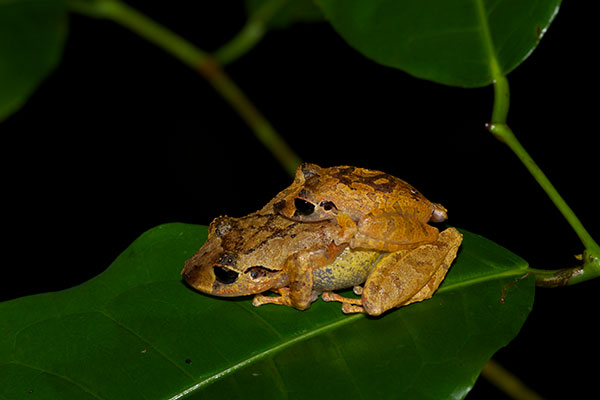
The tubercles on the eyelids are a clue to the identity of these frogs. I guessed that they were Pristimantis ockendeni, and Dick Bartlett thought that sounded right, so that's what I'm calling 'em.
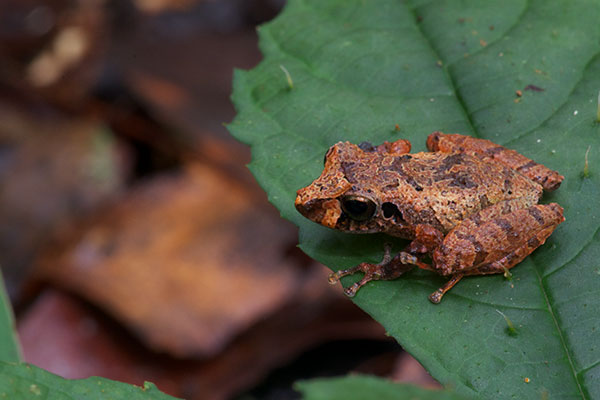
Another probable-ockendeni, as probably-confirmed by Dick Bartlett. A pretty little frog!
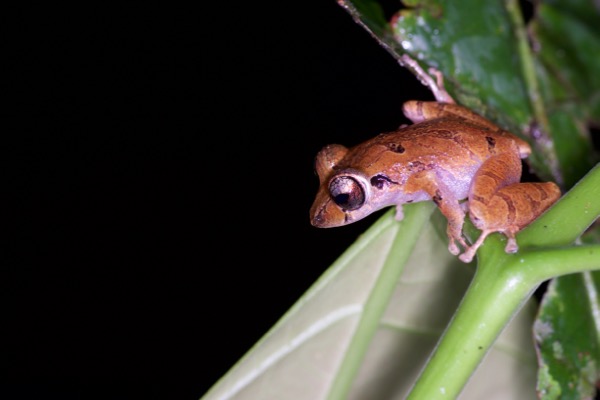
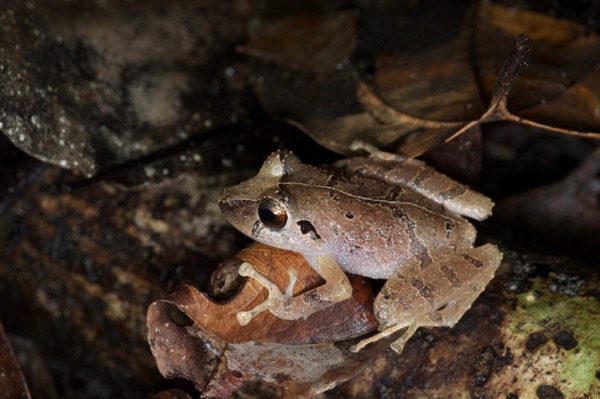
I am not particularly confident that either of these Pristimantis sightings are actually Pristimantis ockendeni, but that's the best ID I could make after studying various websites and books that describe the different candidates. The small tympanum (eardrum) that together with the ridge above it forms a sideways comma shape is one good clue. As always, I would love to be corrected, so please email me if you have thoughts on the subject.
My Travelogues and Trip Lists page includes a complete list of the herps I saw in the wild on my 2016 MT Amazon Expeditions trip.
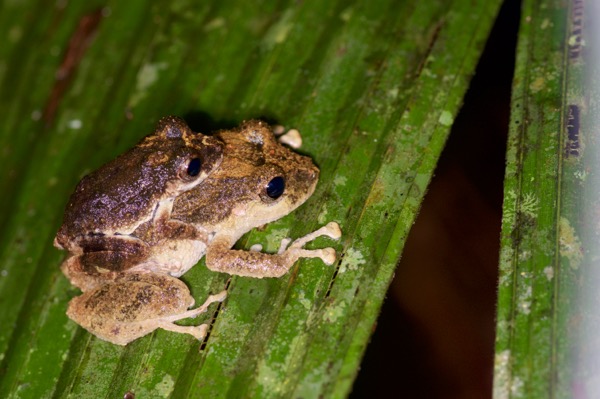
Here's a pair that I originally identified as P. diadematus. Now I'm guessing they are P. ockendeni. Let me know if you have yet a different idea!
My Travelogues and Trip Lists page includes a complete list of the herps I saw in the wild on my 2016 MT Amazon Expeditions trip.
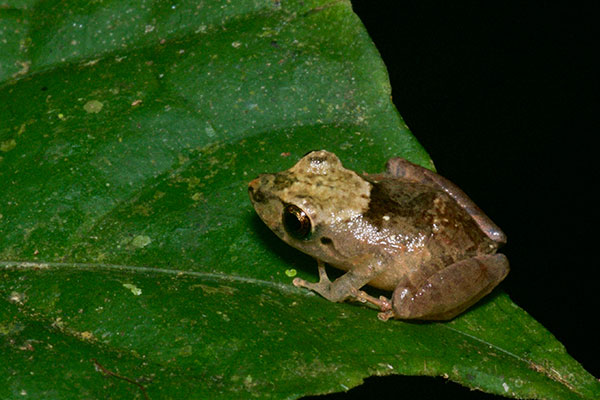
This frog meets has many of the characteristics of Pristimantis ockendeni, including its snout shape, tympanum size, skin texture, and heel tubercles. But the proportions seem quite different than most of the other frogs that I have at least tentatively identified as P. ockendeni. I am guessing that this is a very young individual, that still retains the relatively large head and small legs of froggy youth.
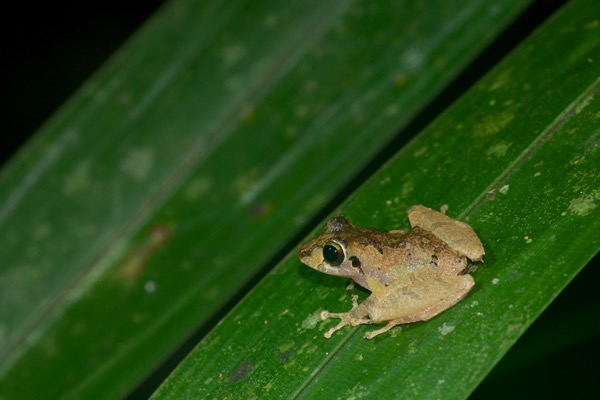
This one has adult-frog proportions, and it was definitely larger than the tiny little one from the previous night. It seems like a very good match for my understanding of Pristimantis ockendeni, but my understanding could be missing some critical pieces.
Printed references:
- Bartlett, R.D., and Bartlett, P. 2003. Reptiles and Amphibians of the Amazon: An Ecotourist's Guide
- Duellman, W.E. 2005. Cusco Amazónico: The Lives of Amphibians and Reptiles in an Amazonian Rainforest
- Rodríguez, L. O. and Duellman, W. E. 1994. Guide to the Frogs of the Iquitos Region, Amazonian Peru